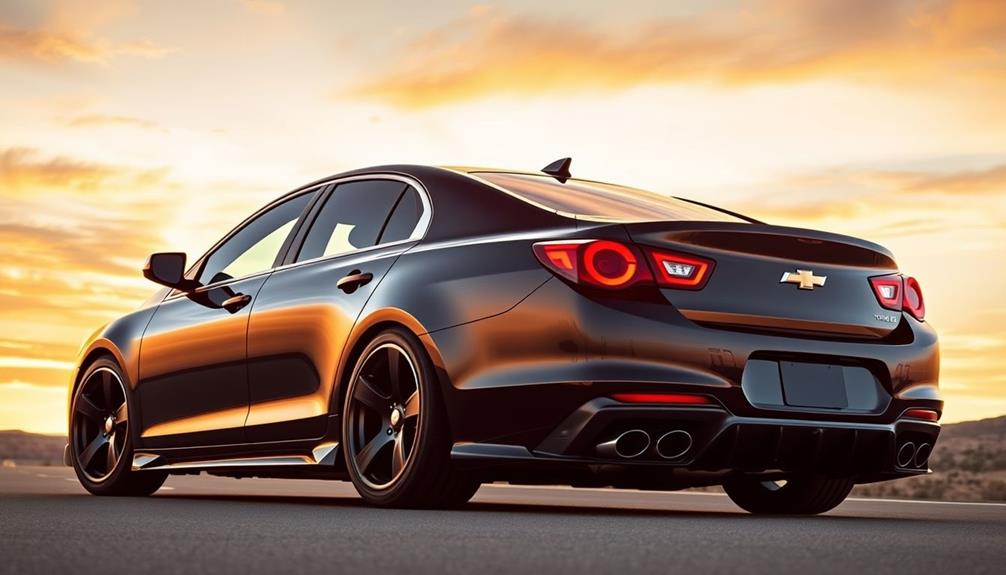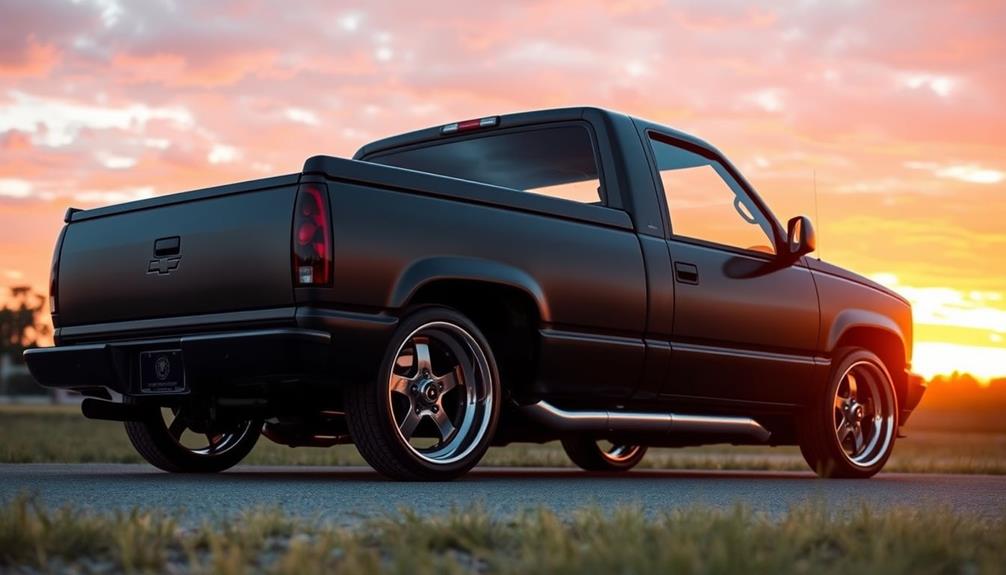Tuning your 2014 Chevrolet Cruze can unleash significant power and enhance driving dynamics. Start with high-quality air filters and a cold air intake to boost airflow, possibly increasing horsepower by up to 10%. Pair these upgrades with a performance exhaust system to maximize engine responsiveness. Consider a Trifecta tune to optimize low-end torque and improve acceleration. Investing around $1,300 can greatly enhance your car's speed and overall performance. Remember to stay informed about local laws and safety features as you modify. There's plenty more valuable information that can help you make the most of your tuning journey.
Key Takeaways
- Invest in a Trifecta tune to optimize low-end torque and maximize engine potential for improved acceleration.
- Upgrade to a cold air intake and sports exhaust system to boost horsepower and torque by up to 10%.
- Consider high-octane fuel (93 octane) to enhance performance gains from your tuning modifications.
- Engage in dyno tuning to fine-tune your engine's power band and ensure proper fuel delivery.
- Join the HP Tuners community for support, resources, and shared experiences on Chevrolet Cruze tuning.
Performance Upgrades Overview
When you're looking to boost your Chevrolet Cruze's performance, diving into tuning options can really pay off. One of the most effective ways to enhance your Turbo Engine's capabilities is through performance upgrades.
Start by focusing on the air intake; a high-quality air filter can improve airflow, allowing your engine to breathe better and operate more efficiently. This simple upgrade can lead to noticeable gains in horsepower and torque.
Next, consider an upgraded exhaust system. Combining this with your air intake modifications can yield up to 10% increases in overall power. With these upgrades, you'll not only feel a difference in your Cruze's acceleration but also enjoy a more engaging driving experience.
Don't forget about tuning your vehicle after these modifications. A trifecta tune is highly recommended, as it optimizes low-end torque and maximizes your engine's potential.
Investing around $1,300 in these performance upgrades can greatly enhance your Cruze's speed and responsiveness. So, if you're ready to make your compact sedan more competitive, these tuning options are definitely worth considering.
Engine Modifications for Power
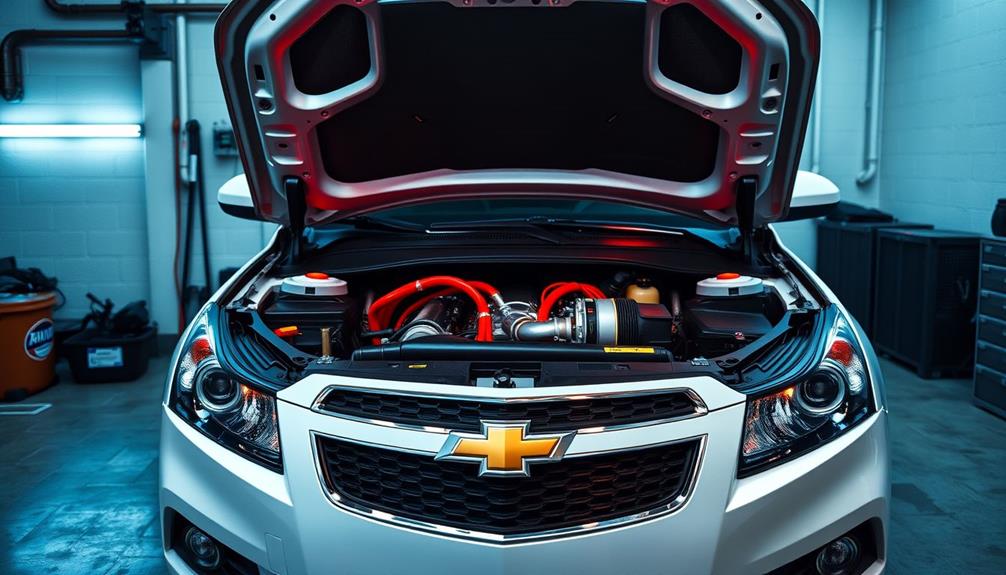
Engine modifications can dramatically increase your Chevrolet Cruze's power output, making it a more thrilling ride. One of the best ways to boost performance is by tuning your engine. Using high-octane fuel, like 93 octane, can considerably enhance your gains.
A trifecta tune is particularly effective, improving low-end torque and acceleration, which makes your Cruze more responsive on the road. If you're looking for more substantial speed increases, consider swapping in a Buick 2.0 turbo engine. This modification can elevate your performance capabilities to new heights.
Additionally, upgrading components like air filters can enhance airflow and engine efficiency. Investing around $1,300 in these upgrades can yield noticeable results.
Don't forget about dyno tuning—it's a critical step that optimizes your engine's power band and guarantees proper fuel delivery. By combining these engine modifications, you'll reveal your Cruze's true potential and enjoy a more exhilarating driving experience.
Whether you're after better acceleration or overall power, these modifications will help you achieve your goals. Get ready for a ride that's not just efficient but also exciting!
Intake and Exhaust Enhancements
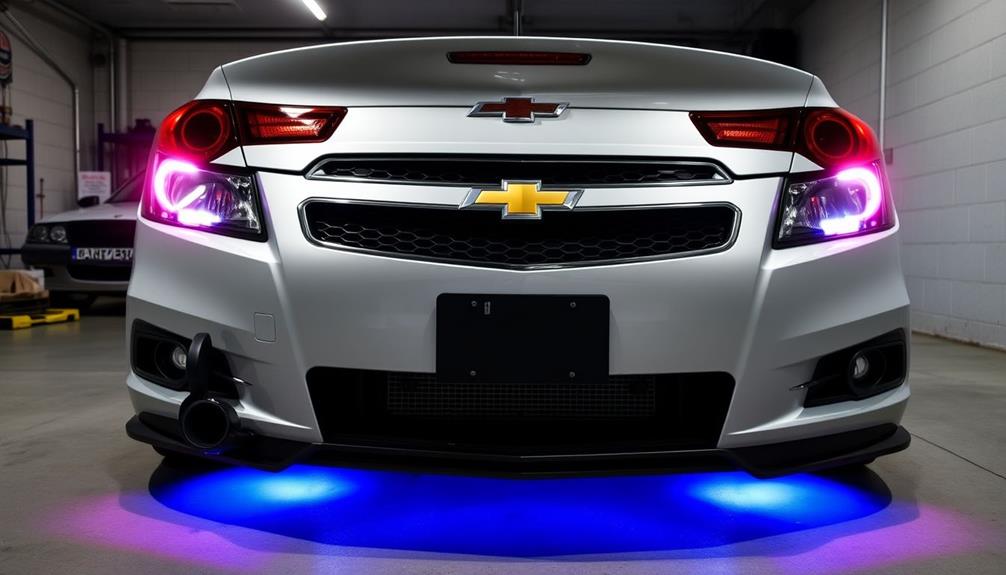
How can you maximize your Chevrolet Cruze's performance? Upgrading your intake and exhaust systems can make a significant difference in your 2014 Cruze's power.
Start with a cold air intake; it can boost horsepower and torque by up to 10%, especially beneficial for the 1.4L Turbo engine. This upgrade enhances airflow, allowing your engine to breathe better, which translates to improved performance.
Next, consider installing a sports exhaust system. Ideally sized between 1.5 to 2.0 inches, this enhancement can lead to noticeable gains in engine responsiveness. The better airflow from the exhaust allows for a more efficient combustion process, further revealing your engine's potential.
Don't overlook the importance of using washable panel air filters. They improve filtration and airflow without incurring high maintenance costs.
For best results, professional porting and polishing of your engine's heads can yield substantial power gains when paired with these modifications.
Legal and Safety Considerations
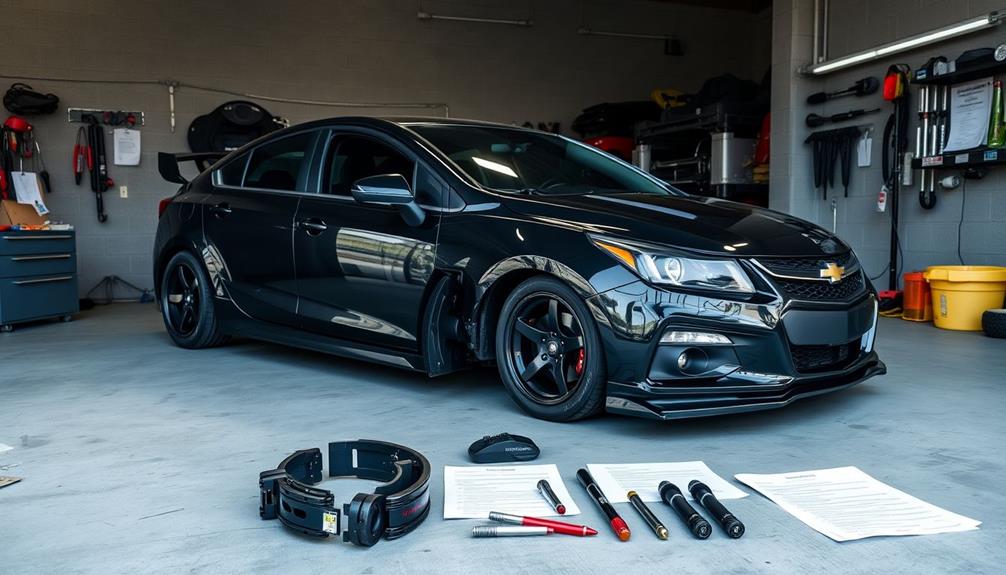
Tuning your Chevrolet Cruze can often enhance its performance, but you should regularly consider the legal and safety implications of your modifications.
When you increase your car's power, safety features like traction control become essential. They help you manage that power, guaranteeing better handling, especially during high-performance driving. Ignoring these features might lead to an unmanageable ride, increasing your risk on the road.
Furthermore, understanding the importance of a personal budget can aid in planning and financing your tuning projects effectively.
You also need to be aware of local traffic laws. Exceeding speed limits by just 20 mph can result in license suspension, so familiarize yourself with regulations.
If you're considering informal racing events, remember that legal repercussions vary by state. Engaging in street racing can lead to serious consequences, so tread carefully.
Additionally, performance modifications can impact your insurance rates. It's important to inform your insurer about any upgrades to avoid coverage issues.
Finally, while enhancing performance, don't forget about fuel efficiency, especially in light of past fuel crises. Balancing power and efficiency guarantees you enjoy your tuned Cruze without compromising on legality or safety.
Always prioritize these considerations to reveal your sedan's true potential responsibly.
Community Resources and Support

Connecting with fellow Chevrolet Cruze enthusiasts can greatly enhance your tuning journey. One of the best resources at your disposal is the HP Tuners platform, which offers a vibrant community dedicated to optimizing your vehicle's performance.
Here, you'll find active bulletin boards where you can engage in discussions about troubleshooting and share your tuning experiences with others. You'll also have access to a wealth of user-generated guides and tutorials that make maneuvering through the tuning process easier.
Whether you're a novice or a seasoned tuner, these resources can provide invaluable insights. Plus, regular community events and meetups present fantastic networking opportunities, allowing you to connect with other car enthusiasts who share your passion.
If you run into any issues, HP Tuners provides excellent technical support, including FAQs and direct assistance options. This means you won't have to tackle software problems alone; help is just a click away.
Frequently Asked Questions
How Do I Turn off Auto Unlock on My Chevy Cruze?
To turn off the auto release feature on your Chevy Cruze, access the infotainment system, navigate to "Vehicle Settings," select "Locks," and uncheck the auto release option. Test the locks afterward to confirm.
How Fast Can You Make a Chevy Cruze?
You can make a Chevy Cruze pretty fast by tuning the engine, upgrading the intake, and modifying the exhaust. With the right enhancements, you could see significant speed increases, making it competitive with faster cars.
How Much HP Can a Chevy Cruze Make?
You can boost your Chevy Cruze's horsepower considerably with performance upgrades. Depending on your modifications, like tuning or adding a turbocharger, it can achieve well over 200 horsepower, enhancing both speed and driving experience.
How Much Horsepower Does a 2014 Chevy Cruze 1.4 Turbo Have?
Imagine harnessing a powerful stallion within a compact frame; that's your 2014 Chevy Cruze 1.4 Turbo, boasting 138 horsepower. With tuning, you can release up to 25 more, transforming your ride into a true performance beast.
Conclusion
Tuning your 2014 Chevrolet Cruze is like unearthing a treasure chest of potential waiting to be discovered. With the right performance upgrades, you can transform your compact sedan into a spirited ride that turns heads and delivers thrills. Just remember to keep legality and safety in mind as you enhance your vehicle. Immerse yourself in the community resources available, and soon you'll be cruising the streets with newfound confidence and power behind the wheel. Upgrading your compact sedan can also improve its fuel efficiency, making your daily commute more cost-effective. Additionally, with the right modifications, you can enhance the handling and overall performance of your 2014 Chevrolet Cruze, making every drive more enjoyable. Take the time to research and carefully consider which upgrades are best for your specific needs and driving style, and soon you’ll be reaping the rewards of a tuned-up and personalized ride.

